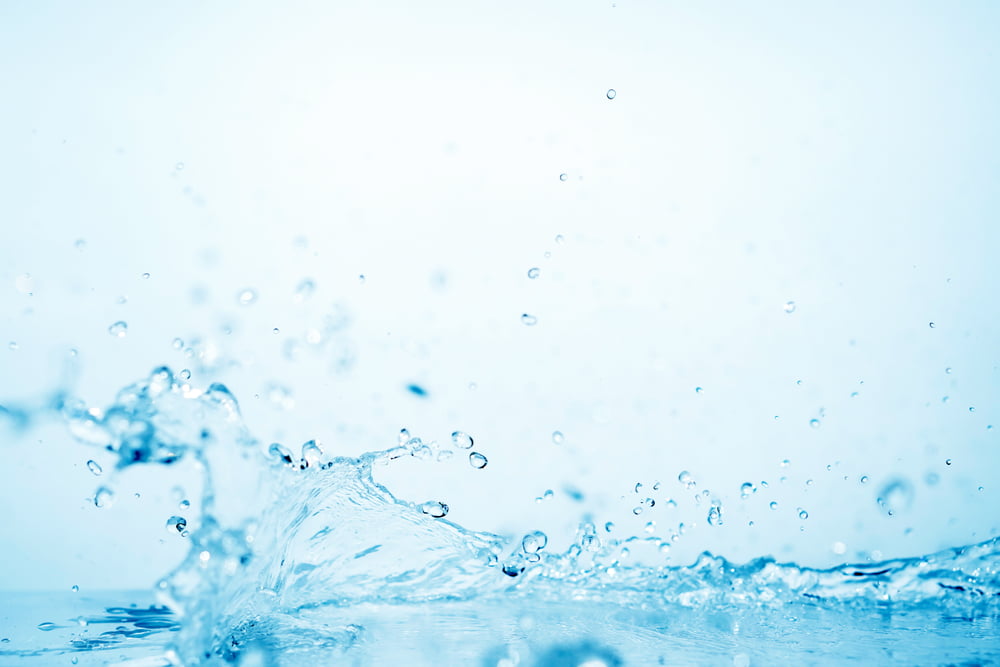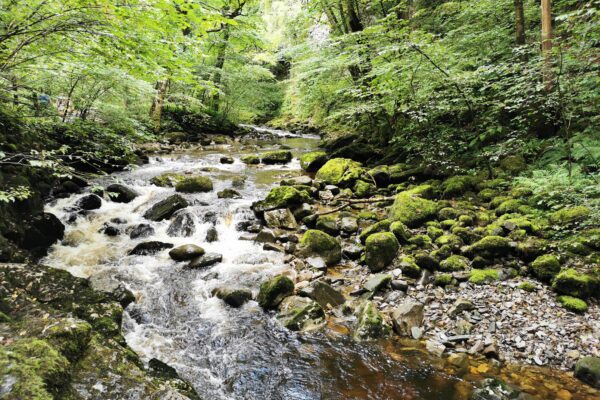
Tightening the taps on water sustainability – LinkedIn Live Q&A
Inspired recently held a LinkedIn Live with our water experts, Chris Tarr and Bob Hines talking about how your business can tighten the taps on water sustainability to save on consumption and reduce costs on your journey to net-zero.
Inspired recently held a LinkedIn Live with our water experts, Chris Tarr and Bob Hines talking about how your business can tighten the taps on water sustainability to save on consumption and reduce costs on your journey to net-zero.
We had an overwhelming number of great questions sent in, that our experts have kindly answered in this Q&A.
LinkedIn Live Q&A with our water experts
Q. Our water bills have recently increased in cost. What can our business do to save money?
A. Firstly carry out an audit of your existing charges and secondly carry out a procurement tender and agree a contract for retail services.
Q. How can we go about monitoring water usage and how often should we be looking at our water meter readings?
A. Take regular meter readings perhaps once per week if possible. Keep a record of the readings and consumptions. Compare the data with other properties that you may own. Identify sites with high usage and investigate further. If possible take meter readings overnight or over a weekend to assess the consumption during periods of “no or little usage”.
Q. Our largest cost on our bills is not for water and sewerage but for surface water drainage – is there anything we can do about it?
A. This charge is for rainwater drainage and can be based on the area of a site/the Rv/or be part of the volumetric charge. Firstly. are you connected to the suppliers infrastructure for this service? If not, it should be removed and refunded from your bills. If you are not sure then arrange for a drainage survey to be carried out to establish if the charges are correct.
Q. We have bills from lots of different water suppliers, often covering different periods and usually with estimated reads – is there any way that that this could be improved?
A. Water suppliers are not obliged to take regular readings of your meters. In some instances, they only have to take one actual read per year. If you want bills that are based upon actual readings then it is down to the customer to take the readings and to supply them to the water company. An alternative would be to install a private data logger on your meter. This would enable you to take readings remotely.
Q. We want to look at sustainability solutions but we’re not sure of the first step or how to set a baseline for reductions. Where should we start?
A. Start by collating and recording your water bills in terms of cost and consumption. This should identify those accounts that have high expenditures/consumptions and allow you to concentrate on those. Alternatively employ a specialist company to conduct an audit of your water expenditure and consumption.
Q. How can we align water with our overall energy strategy and ESG disclosures?
A. Water can and should form part of any energy strategy. With the market now open there is the possibility to align contract end dates with energy ones and from a wider efficiency objective Water reductions should be considered at the same time. Every cubic meter of Water saved translates into a carbon saving. Having an understanding of current use levels and being able to set a target for reduction of Water use alongside ESG reporting demonstrates a responsible environmental approach.
Q. I’m interested in a Borehole but I wondered what happens to the existing mains; where does our water come from now? Does the water company need to be involved? How much does it cost and is it a quick process?
A. A borehole can offer great cost savings. The existing mains will remain in place as a back-up supply unless you ask for it to be disconnected. Borehole water comes from aquifers within the ground. The depth of the borehole will vary depending on the geology of your particular area. The water company does not need to be directly involved. Each borehole is unique. Its cost is a consequence of a variety of factors such as drilling, engineering, water quality/quantity, treatment etc. Costs will vary from 10’s to 100’s of thousands. Timescales will also vary – ranging from 6months to over 1 year.
Q. What is rainwater harvesting?
A. Is where rainwater is collected and used to replace mains water. Particularly suited to new build projects. Retro-fitting systems to existing buildings does present challenges in terms of engineering, construction and cost. We are constantly monitoring improvements to harvesting systems but at present we find only limited opportunities for this technology. The kinds of businesses that have successfully introduced rainwater harvesting include garden centres, golf courses and agriculture.
Q. If we reduce our water consumption does it make a significant impact on our carbon footprint?
A. Yes it does – for every m3 of water that a customer saves there is also a saving of between 2 – 3 Kg of CO2.
Q. What does Trade Effluent refer to, and how does this differ from normal wastewater?
A. Trade effluent is any liquid waste that’s discharged into sewers from a business, industrial or trade process, excluding domestic sewage and surface water. It is charged according to its level of contamination. In some instances savings can be made by treatment of the effluent prior to its discharge to drain.
Q. We would like to go out to tender but were told that there’s only one supplier in our area. Do you think that will change at any point?
A. If the site is in Wales, Northern Ireland, or the Channel Islands unfortunately their market is not de-regulated and you cannot leave your incumbent supplier presently. If, however, it is in England or Scotland you can undertake a procurement exercise to switch suppliers.
Q. We are trying to look at ways of saving water at a Golf Club – we have a bore hole and can use a pond but do you have any other suggestions?
A. Conducting an audit could determine if the borehole supply could be utilised more across the site to reduce reliance on mains water. Additionally this would outline if there was potential for efficiency devices to be installed in the domestic areas (showers, W.Cs, taps etc.) to help reduce consumption.
Q. What are the challenges for retrofitting rainwater capture? Is it worth the expense and disruption? (We have several buildings in our college group, some of which are decades old.)
A. The biggest challenge in retrofitting is associated with the additional expense and work involved with the internal pipework alterations. In order to fully understand the payback periods a determination of where recycled water could be used should be undertaken.
Q. Are there any water efficiency projects you could suggest- on the energy side we can work on LED lighting or more efficiency AC but is there anything that can be done to improve the water sustainability and minimise usage?
A. Installing a data logger on your meter(s) would provide an full indication of use which would highlight any potential excess consumption problems. Flow restricting devices on taps and showers, ‘hippo’ bags in WCs and ensuring that other water facilities are well maintained can all lead to a reduction in use.
Q. Given it is water saving week, what are privatised suppliers doing to raise their profile positively on massively wasteful leaks, how are they being held more accountable and what is stopping water from following power & gas prices significantly upwards?
A. The regulator (Ofwat) target Wholesalers with reducing supply leakage, from a commercial point of view installing data logging devices or weekly meter readers will highlight any current leakage on private supplies. Undertaking an Audit will also provide an evaluation of water use across your site.
Q. Looking to create a water harvesting scheme on site. Currently using around 20,000m3 for irrigation and looking to increase to 40-50,000 m3. Looking to install a borehole as well as capturing. Anything to consider?
A. Installing a borehole is a great way to reduce costs and provide a carbon saving. Factors to consider with a borehole range depending on the nature of site and what the water will be used for in addition to the location and the availability / depth of water.
Q. My organisation is largely admin based, operating from sites largely managed by the Landlord. Our intervention has mainly been about raising awareness on water waste etc. What else can we do to reduce water use?
A. Encourage your Landlord to install sub-meters or data loggers so consumption can be broken down per area will provide a clearer picture of use across the site. Ensuring that domestic facilities through the offices are as efficient as possible.
Q. We have hundreds of supplies to a proportion of our social housing properties, all billed individually (sent to properties). Any suggestions on how we can collate all of the supply data easily? We have asked water suppliers for a list of all our supplies but they won’t give us this information.
A. Conducting a procurement exercise will consolidate all supplies (England & Scotland) to a single provider allowing a single point of contact and single monthly invoice. To conduct a procurement tender you will need the SPID for each site in the portfolio, however if you have a portion of these a contract can be signed and the remaining 20% can be added in at a later date for example.
Q. We only operate one site, so how do we benchmark?
A. With an audit we are able to benchmark site types based on industry accepted benchmarks. Furthermore, we are able to quantify the predicted consumption for a site depending on the nature of the site and the number of people based from it.
Q. If we cant change who gives us the water, just who we pay, how much savings can be made by swapping companies as they must have to all pay the same company that provides it?
A. On average we see around a reduction of 4-6% in charges compared to the default rate in England with potentially up to 20% in Scotland. In effect a certain % of all commercial customers bills goes back to the Wholesaler for the region and the rest to the Water Retailer, from which they provide a cost saving from default rates.
Q. Do net-zero strategies and targets translate to water?
A. Water should form part of any holistic net-zero strategy, every cubic meter saved of water translates into a carbon saving.
Get in touch with our water experts today to discuss your business’s water needs by contacting us on 01772 689250 or email [email protected].










